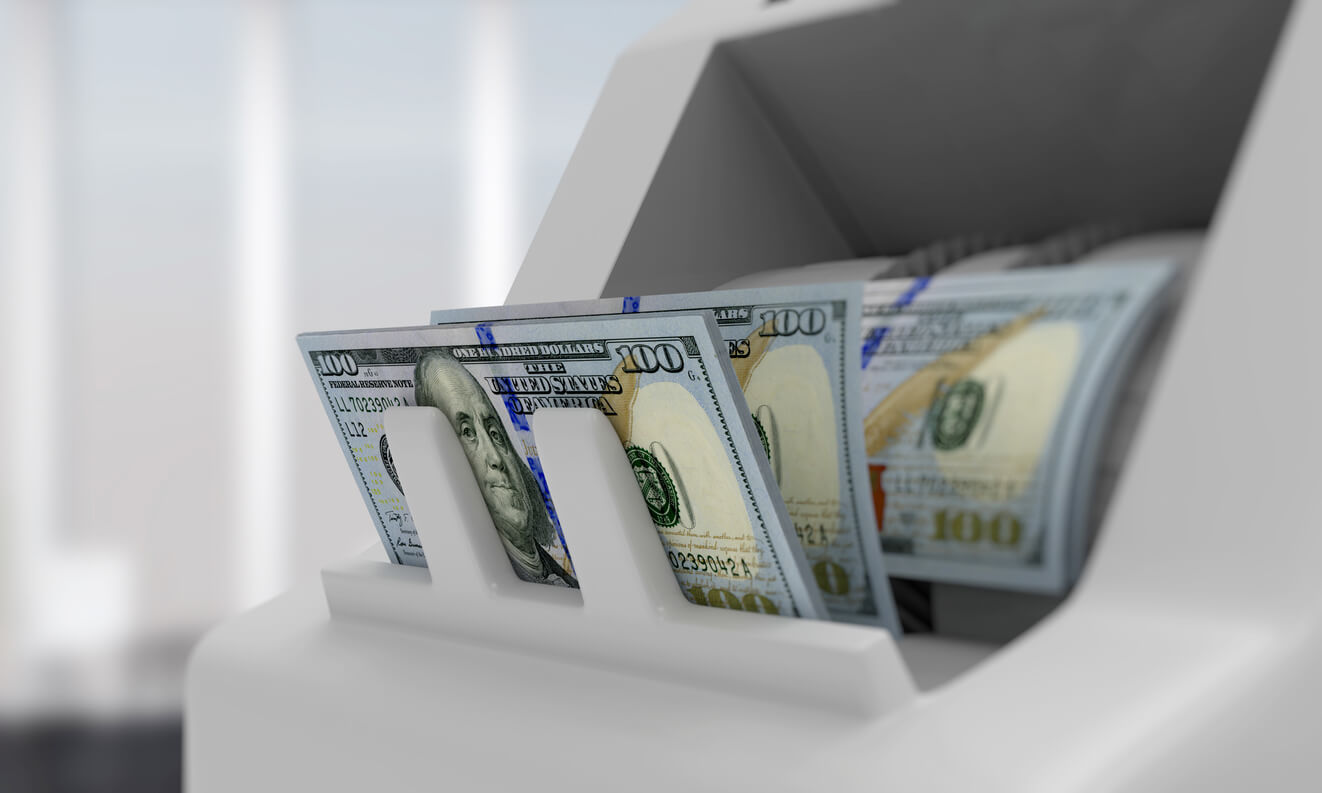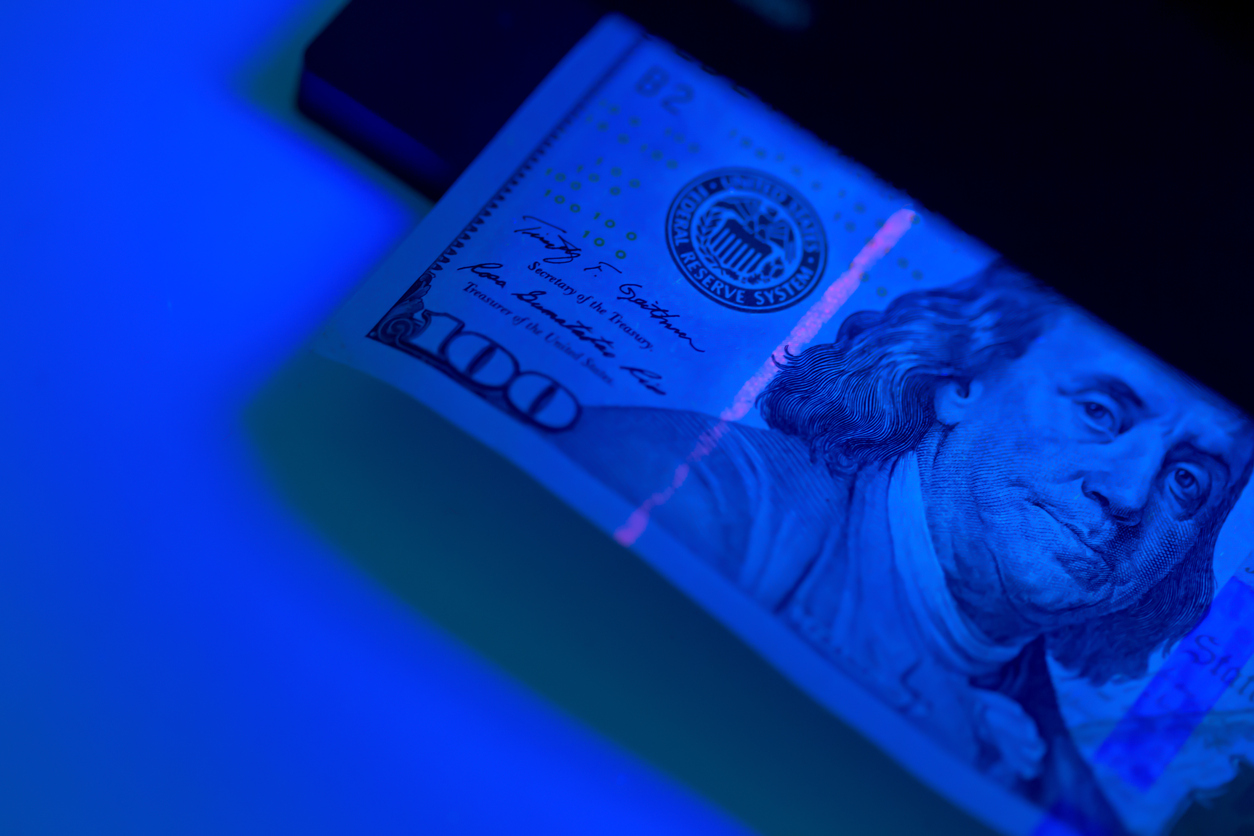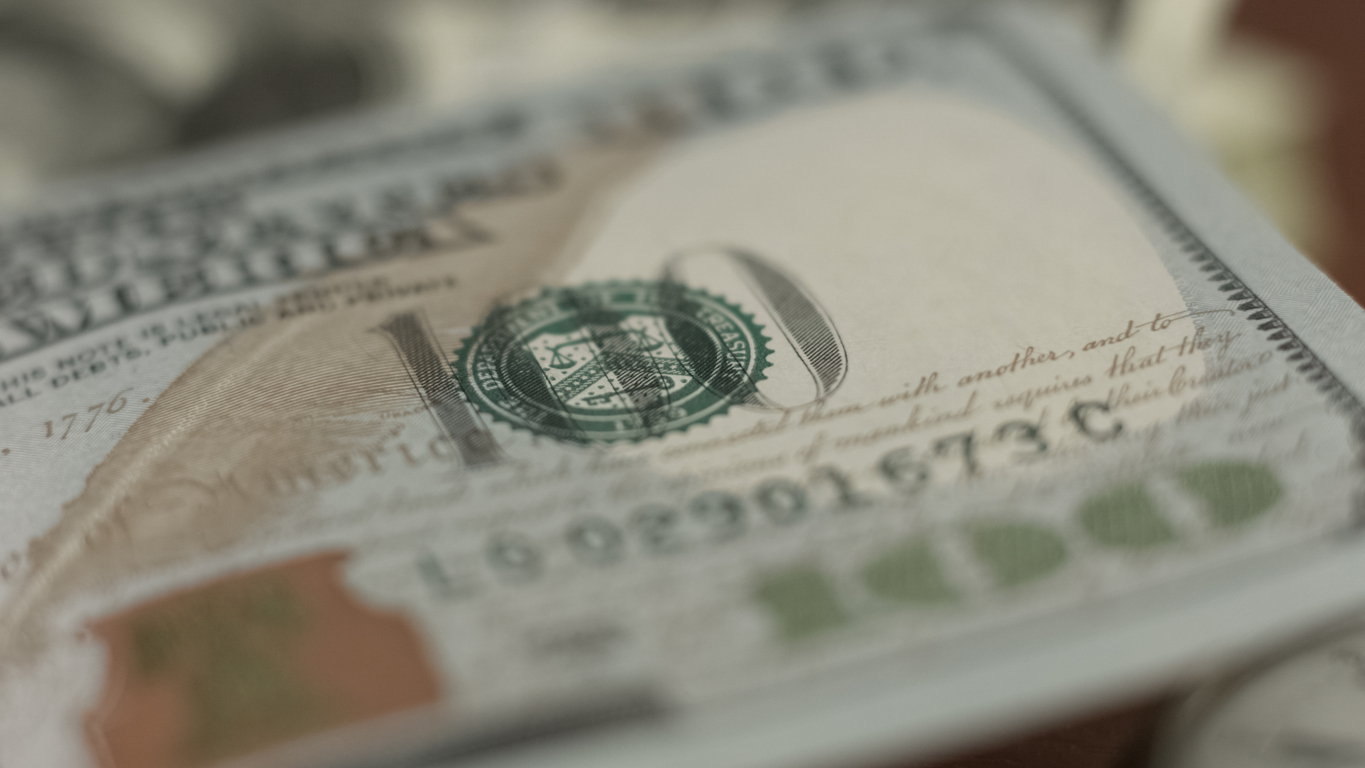Do you know how to detect counterfeit bills? Here’s what to look for when you receive cash from customers.
Counterfeiters’ tactics continue to grow more sophisticated, especially with recent advancements in technology. But, there are still plenty of telltale signs that can help you and your employees distinguish counterfeit money vs. real money. Below, we’ll discuss expert strategies on how to tell if money is counterfeit so you can avoid unnecessary losses.
Discover how Integrated Cash Logistics CashSimple® solution does more to manage your money.
U.S. Currency Security Features
Before we discuss how to identify counterfeit money, it’s important to review the built-in security features of legitimate U.S. currency. Familiarizing yourself with these features should make it easier to spot a fake bill that lacks them.
Watermark
Authentic U.S. bills have a distinct watermark that’s only detectable when held up to the light. Depending on the bill’s age and denomination, the watermark might be a replica of the face on the bill or a simple oval shape. Additionally, the watermark should always be on the right-hand side of the bill. Overall, a clear and correctly placed watermark is a strong indicator of legitimate currency.
Security Thread
Modern currency has an embedded security thread that runs from top to bottom in the center of a banknote. The correct placement depends on the denomination. For $10 and $50 bills, the thread is to the right of the face and on the left side for $5, $20, and $100 bills.
Color-Shifting Ink
Since 1996, all U.S. bills of $5 or more have color-shifting ink on the bottom right-hand numeral. The design of the ink allows it to change color when someone tilts the bill, making it highly difficult for counterfeiters to replicate. On a legitimate bill, you’ll see the color shift from gold to green or green to black when tilting it back and forth.
Raised Printing
Real U.S. currency has raised print that you can feel when running your fingers over the bill, which counterfeit dollar bills often lack. Use your fingernail to feel for the ridges if you’re having trouble determining its legitimacy.
Microprinting
The real currency will have a microprint phrase in the security thread that matches the bill’s denomination. For example, the phrase on a $10 bill will be “USA TEN”. Microprinting is tiny, finely printed text that counterfeiters often cannot replicate.
UV Light Detection
An ultraviolet light can reveal hidden security features on legitimate bills, such as glowing threads or patterns, which are undetectable to the naked eye. Counterfeit money often fails this UV test, making it an additional layer of security if you notice one of the other security features is missing or incorrectly placed.
Learn how ICL’s cash capture technology simplifies how you control cash and schedule a demo today.
8 Strategies For How to Spot Counterfeit Money
How can you tell if money is fake? The following tips and strategies will help you identify counterfeit money during transactions. You can easily use these cash-handling security best practices and complete them quickly during cash exchanges.
Check the Feel of the Paper
The texture of real currency is distinct because of the special paper it is printed on. When you’re holding an authentic banknote, feel the bill and note the difference in texture compared to fake money. While this might seem like a subtle distinction, the more cash you handle, the easier it will be to tell the difference.
Examine Borders and Printing
Another tip is to inspect the borders and edges of bills. How do you know if a bill is fake this way?
Counterfeit money often has uneven or blurry printing. A counterfeit U.S. bill may even appear crooked. On the other hand, legitimate currency will have crisp, well-defined edges.
Look For Red and Blue Threads
Real U.S. bills have embedded red and blue threads in the paper. You’ll know a bill’s fake when it has printed or missing threads instead. Thus, looking for the proper-colored threads is a quick authenticity check to distinguish fake money vs. real money.
Inspect Serial Numbers
When learning how to check for counterfeit money, you should also pay attention to the serial numbers shown on bills. Counterfeiters may reuse a serial number; so, if you notice multiple bills have the same one, it could be a signal they’re fake. Additionally, the serial numbers on a single bill should be the same. So, if you notice a bill has mismatched serial numbers, it’s another good indication that it’s counterfeit.
Check For Security Threads
When you’re learning how to spot fake money, looking for the security thread – and ensuring it’s in the proper location – is highly important. Again, you should only see it when you hold the bill up to the light. If it’s on the wrong side of the face for the denomination, it’s likely fake.
Use a Counterfeit Detection Pen
You might consider using a counterfeit detection pen at checkout, which reacts to the type of paper that counterfeiters commonly use. These pens work quickly and are an easy way for employees to verify the authenticity of bills.
Look For Ink Bleeding or Smudging
Inspect all bills for ink inconsistencies that may indicate it’s fake, such as bleeding or smudging. These are signs of poor printing quality, as real currency does not have ink that will react in this manner.
Check New $100’s For Security Ribbon
Maybe you’re wondering how to detect counterfeit $100 bills, as they can be the most costly to unknowingly accept. Since 2009, $100 bills feature a blue security ribbon woven into the paper — not printed on it. Make sure to look for this feature when accepting a $100 bill, tilting the banknote to ensure the holographic images shift in the blue ribbon.
Shorten your distance to cash with the CashSimple® solution from Integrated Cash Logistics.
How to Protect Your Business From Counterfeit Money
Cash handling procedures for restaurants, retailers, and other types of cash-heavy businesses should include the above authenticity checks. This way, you can avoid accepting fake currency, which can lead to considerable losses when gone undetected. As we’ll describe below, taking proactive steps like proper staff training and investing in the right technology can help safeguard your business from counterfeit bills.
Proper Employee Training
Employees who handle transactions are your first line of defense against counterfeit currency. They must receive proper training on how to quickly identify fake money during a transaction. For instance, regular retail cash handling training sessions might include a review of authentic currency features and helpful detection methods, as we’ve discussed throughout.
Use Technology
Businesses can also use technology like counterfeit detection machines, UV light scanners, and smart safes to protect against counterfeit currency. Technology like this helps employees distinguish counterfeit money from authentic bills with high levels of accuracy and efficiency.
In fact, with ICL’s proprietary software and smart safes, if counterfeit bills are detected, they will not be accepted into the deposit so you can catch them before they make their way to your bank account. This eliminates bank reconciliation fees and challenges, and enables you to quickly review data to keep records up to date.
ICL’s software-first CashSimple® solution streamlines everything from change orders to tracking deposits.
What To Do If You Suspect Counterfeit Money
If you suspect you’ve encountered counterfeit money, don’t confront the customer. Hold onto the bill, contact the proper authorities, and preserve the evidence, as described in the following steps:
- Don’t say anything or do anything that would put you in danger: Don’t question the customer about it. Observe any defining traits that would allow you to provide authorities with a description if needed.
- Do Not Return the Bill to the Customer: You’ll need to preserve the evidence as best possible, so don’t return the suspected counterfeit to the customer. Hold onto it for further review by authorities.
- Contact Security or Local Authorities: You can contact your local U.S. Secret Service field office to complete a Counterfeit Note Report.
- Handle the Bill Properly: To help preserve any of the suspect’s fingerprints or DNA on the currency, try to minimize your handling of the bill.
Safeguard Your Cash with Integrated Cash Logistics’ CashSimple® Solution
It’s nearly impossible for counterfeiters to accurately replicate and authenticate U.S. currency. Thus, understanding the security features of real U.S. bills and the common mistakes that counterfeiters make can help your team spot fake bills with better accuracy.
If you’re looking for a way to streamline cash management and improve counterfeit detection, Integrated Cash Logistics’ CashSimple® solution can help. Contact us today to learn more about our CashSimple® solution and how the ICL difference can simplify how you control your cash.




